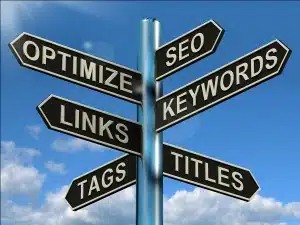Getting a book into tens of thousands of readers’ hands is no easy task. One of the greatest challenges an author faces is overcoming the problem of obscurity. Digital book catalogs have unlimited shelf space, making it increasingly difficult for interested readers to find your book.
Over the weekend, I had an interesting conversation with a senior executive from Amazon.com. I was sitting in his freshly remodeled home, enjoying appetizers on the porch on a warm summer evening. This executive manages a team of people at Amazon who perform the software development on Amazon’s search algorithms.
This conversation took an interesting turn when we started talking about Amazon’s search results, such as what you see when you type in search terms like “high performance tennis books.” I was curious as to the weight (if any) they give to historical conversion rates when deciding which books to display in the search results. This was interesting to me as the author of a book called Conversion Marketing, which delves into how to optimize a website to boost ecommerce conversion rates.
What I discovered was interesting in that Amazon displays the most relevant search results possible while resisting the temptation to display the highest converting items in their catalog.
Why is this important to authors? What this means is that when you or your publisher create your book listing on Amazon, it makes a material difference in the sales of your book based on how you structure your book listing and your book’s information (or metadata).
I like writing about the topic of online book conversion because authors keep asking me, “How can I sell more copies of my book?” Over the last decade of my experience publishing books, I’ve discovered that getting a book into the marketplace effectively involves the collective knowledge of 30 different people.
From slick cover design to writing punchy marketing copy, the demands of publishing your book involve some highly specialized skills. If you’re not an expert at all of them – and trust me, no one is – it’s time to work a bit smarter.
I own a company that helps authors publish their work, then distributes their books and audiobooks internationally. That gives me a unique perspective on the question of how to sell more books. Not a week goes by when I don’t have authors approaching me for help boosting the sales of their self-published books. The most common mistake independent authors make is that they try to do too much themselves. I’ve witnessed a lot of missed revenue opportunities from false starts, poor workmanship or negative reviews. These mistakes can be very costly indeed.
So what can you do to create a great looking book listing on Amazon.com, which also drives high traffic from Amazon search results? Here are my top 3 marketing tips for structuring a great performing book listing on Amazon.com:
Tip 1 – Keyword Research: establish what keywords people use to find books in your genre. Use these keywords throughout your book listing. If you can include key phrases in your title, sub-title and/or descriptions, you’ll be doing great. To research keywords, consider resources such as AMZ Tracker.
Tip 2 – Book Description: structure your book description with over 1,000 characters. Also, it can help if your description is HTML coded. Finally, make sure your description is well written. A search will begin and end here if the description cannot get the point of your book across quickly.
Tip 3 – Bullet Points: many Amazon shoppers like to have a quick summary of the book, at a glance. Using bullet points in your description can help, with the key selling points of your book. What goes into your key selling points? A few ideas include mentioning awards, endorsements, a synopsis and the genre of your book.
Follow these simple guidelines for your book listing in electronic catalogs, and you will be well on your way to getting your work into the hands of eager readers.


